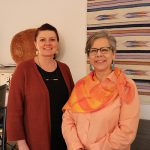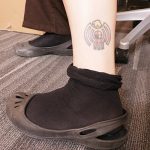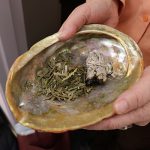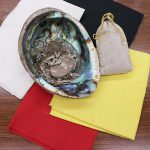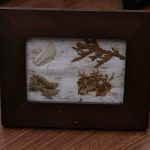By Lu Zhao
Medill Reports
It was a surprise for the 8-year-old girl when she first learned she is a Native American many years ago. Pamala Silas still remembers that day. She had transferred to a new school. Huddling in the chair, sitting beside her younger sister, Pam was introduced by the teacher as an “American Indian.” She couldn’t believe what she heard.
“What? Why did she say that?” Pam, in her 50s and proud of her heritage, said she harbored as a child stereotypes of Native Americans that, all too often, people saw on TV. “They’re all naked and crazy!”
Pam went home and asked her foster mother why they called her an Indian at school.
“Well, you are,” her foster mother said. She took out an encyclopedia, went to the American Indian section and showed Pam a picture of a man with a headdress on a horse. “You’re an Indian.”
“You are Menominee and you are Oneida,” Pam’s older sister said.
Pam had to write down the tribal names but didn’t even know how to spell them at that time.
Menominee and Oneida are two Native American tribes among 573 federally recognized ones in the U.S. according to a published list from the Bureau of Indian Affairs. Each tribe sets its own requirement for tribal membership. Generally speaking, you can only be a member of one tribe even if you meet the qualifications of more than one Native American nation, according to a research paper by Carol N. Neptôn.
Pam’s mother is Menominee and her father is Oneida. When Pam was little, her biological mother enrolled her with the Menominee tribe. Now she is an active tribe member and serves as the coordinator of the Menominee community in Chicago. Yet when Pam became a mother, she decided to enroll her children in her father’s tribe – the Oneida.
“My bloodline is stronger in the other tribe,” explained Pam, now is the associate outreach director for Northwestern University’s Center for Native American and Indigenous Research. “My father was a pure Oneida but my mom wasn’t 100 percent Menominee.”
Jasmine Gurneau, 32, Pam’s younger daughter, grew up with pride in being a Native American. Attending community events, learning culture from an after-school program and doing cultural practices, she knows clearly who she is and hardly feels insecure.
Jasmine said she was usually the only Native student in the classroom growing up and she talked about the differences between other students and herself.
“The biggest difference is the invisibility,” she said. “It’s just you need to explain that we’re still around.”
Jasmine was once asked in college whether she lived in a teepee. She answered “no” and explained, “I live in one of the dorms downtown.” A voice in her mind said, “What the heck the kind of question is that?”
Still, the identity of Native Americans is not that easy to understand, even for Jasmine’s friends.
“Why are you Oneida?”
“Because my mom is Oneida.”
“But why doesn’t she practice it (as an Oneida)?”
Jasmine had no answer. She turned to Pam to ask why.
“You’re always Menominee, you’re always Menominee,” Jasmine once said to Pam. “But what about you being Oneida? How come you’re denying you’re Oneida?”
Pam never thought of it that way. So she embraced her Oneida heritage as well. She goes to the longhouse, a type of traditional Oneida building, wears the regalia of Oneida Native dress and respects Oneida culture. But she can’t participate in Oneida politics since she isn’t enrolled in the membership. In this sense, Pam encouraged Jasmine to learn more about the Oneida community as a voting citizen of the Oneida people.
Though she is an Oneida member, Jasmine identifies herself as both Oneida and Menominee. While pursuing a research project with the Menominee community at college, she got more involved in the Menominee community.
“Just because I’m not enrolled in Menominee doesn’t mean that my grandma, my great grandma, my great great grandma weren’t Menominee,” Jasmine said. “You [don’t] undo the fact that my relatives were Menominee just because of a piece of paper.”
She tries to learn the totally different cultures and languages of both her Native communities and pass the knowledge to her children even though they can’t be enrolled in any community.
Jasmine’s husband is Ojibwe but their children don’t meet the blood quantum requirements of any of the three tribes — even though it is only 1/64 shy of the qualification to enroll with the Ojibwe.
“It’s frustrating to me that it’s a system that was initially imposed by the government, and now the tribes are the ones who are reinforcing it,” Jasmine said. “Like we’re doing this to ourselves now.”
Shannon Keller O’Loughlin, executive director of the Association on American Indian Affairs, explained that blood quantum has been used as part of the determination of membership by some tribes, but it is not used by all Native Nations. For many tribes, people have to prove a 25 percent blood relationship to the tribe to be considered a member.
“Blood quantum was a racially based classification that the United States, the federal government and probably other colonial governments used against indigenous people in order to assimilate them into the broader society,” O’Loughlin said.
She said that intermarriage is very common in Native Nations.
“Indian people have been married to each other from different tribes for as long as ever,” she said. “That doesn’t make us less Indian because it’s not about race … it’s about culture and it’s about a political category.”
Though Jasmine feels critical of aspects of the system, she still raises her children as Native Americans and gives them middle names in Native languages. Her daughter’s middle name is Wiishkobi in Ojibwe, which means sweet. Her son’s name Enaemaehkiw in Menominee means thunder.
“They are Oneida, Menominee and Ojibwe,” Jasmine said. “Even though they are not officially recognized by the tribes as citizens.”



